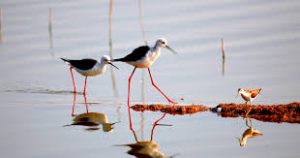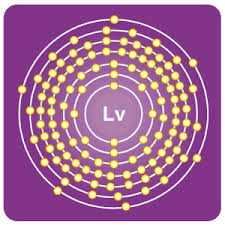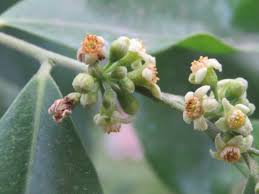Today’s Current Affairs: 30th July 2024 for UPSC IAS exams, State PSC exams, SSC CGL, State SSC, RRB, Railways, Banking Exam & IBPS, etc
Table of Contents
Pollution Under Control (PUC) Certificate:

The Supreme Court recently abolished its own directive issued in 2017 that made a valid pollution under control (PUC) certificate mandatory for renewal of third-party insurance policy.
- Pollution Under Control (PUC) Certificate often referred to as the pollution certificate, is a mandatory document for every vehicle owner in India.
- This certificate states that you can legally ride/drive a vehicle in India with respect to meeting environmental standards.
- It is a validation document that states that the vehicle’s emission levels are within the permissible levels set by the government.
- All vehicles on Indian roads are required to possess a valid PUC certificate under the Central Motor Vehicles Rule 1989.
- Usually, a new vehicle is exempt from PUC in the first year. Following this, the vehicle has to undergo mandatory PUC tests at regular intervals to get a validity certificate.
- A PUC certificate is usually valid for a year from the date of issue.
- Failure to produce a PUC certificate can invite a fine of up to Rs 10,000 or six months of imprisonment or both under the Motor Vehicle Act.
- The vehicle owner may also be disqualified from holding their licence for three months.
- If the vehicle is found to be emitting fumes beyond the prescribed limit, despite possessing a valid PUC certificate, the certificate will be cancelled.
- The vehicle owner will have to obtain a new PUC certificate within seven days.
- The PUC certificate rule is applicable to CNG-powered vehicles in addition to petrol and diesel vehicles.
World Heritage List : New

UNESCO recently inscribed China’s Migratory Bird Sanctuaries along the Yellow Sea-Bohai Gulf (Phase II) to its World Heritage List.
- Bohai Gulf is the innermost gulf of the Yellow Seaon the coast of Northeastern and North China.
- It is sometimes called Bohai Sea, or Bo Hai for short; in earlier times it was called the Gulf of Chili or the Gulf of Pechili.
- It is approximately 78,000 sq.km in area, and its proximity to Beijing, the capital of China, makes it one of the busiest seaways in the world.
- The Bohai Gulf is enclosed by the Liaodong Peninsula(northeast) and the Shandong Peninsula (south).
- Among the most important cities on the Bohai Gulf are Dalian and Tianjin; its shores form three of the most famous bays in the country: Liaodong Bay, Bohai Bay, and Laizhou Bay.
- The Yellow River, China’s second longest river, discharges into the gulf.
- There are both onshore and offshore petroleum deposits, and several oil refineries are located there as well as other industries.
- Yellow Sea is a marginal sea of the western Pacific Ocean
- It is situated between mainland China to the west and north, the Korean Peninsula to the east, and the Shandong Peninsula and Liaodong Peninsula to the south.
- It connects with the Bohai Sea to the northwest.
Livermorium:

Scientists at Berkeley Lab’s 88-Inch Cyclotron have successfully created superheavy element 116, also known as livermorium.
- Livermorium is part of the “superheavy” category of elements.
- These are elements that exist beyond the known elements in the periodic table and are typically very unstable.
- It is artificially produced transuranium elementof atomic number 116.
- In 2000 scientists at the Joint Institute for Nuclear Research in Dubna, Russia, and the Lawrence Livermore National Laboratory in Livermore, California, announced the production of atoms of livermorium when curium-248 was fused with calcium-48.
- It does not occur naturally in the Earth’s crust.
- Researchers used a powerful particle accelerator to smash together titanium-50 atoms.
- They needed to produce a highly intense beam of titanium-50 and target it at a thin layer of plutonium to produce livermorium.
- Over 22 days, they managed to create two atoms of livermorium, marking a significant achievement.
INS Tabar:

The Russian President recently greeted Indian Navy personnel onboard Indian Naval Ship (INS) Tabar, which is participating in Russia’s Navy Day celebrations.
- INS Tabar is a stealth frigate built for the Indian Navy in Russia.
- It is the third of the Talwar-class frigateof the Indian Navy.
- The frigate was commissioned on 19 April 2004 in Kaliningrad, Russia.
- INS Tabar has the ability to handle air/surface/subsurface missions or defending herself, operating either independently on maritime missions or supporting a larger naval task force.
- The ship is part of the Indian Navy’s Western Fleet, which is based in Mumbai under the Western Naval Command.
- Fully loaded, INS Tabar has a displacement of 4,035 tons.
- Speed: 30 knots (56 km/h; 35 mph)
- Maximum range is 4,850 nautical miles (8,980 km; 5,580 mi) at 14 knots (26 km/h; 16 mph), while at 30 knots (56 km/h; 35 mph), the range lessens to 1,600 nautical miles (3,000 km; 1,800 mi).
Agarwood:

India has successfully prevented inclusion of Aquilaria malaccensis (agarwood) in the Review of Significant Trade (RST) of the Convention on International Trade in Endangered Species of Wild Fauna and Flora (CITES).
- Agarwood or Gaharu as it is known in many Asian countries is resinous heartwood that occurs in trees belonging to the genus Aquilaria.
- It is a fast-growing, subtropical forest tree.
- It grows at elevations from a few meters above sea level to about 1000 meters, with approx. 500 meters being most ideal.
- West Bengal and North-Eastern States of India namely Assam, Meghalaya, Manipur, Mizoram,Arunachal Pradesh and Nagaland.
- This is a tropical tree which grows over high rainfall tracts throughout humid regions.
- The region experiences low temperature variations between 20ºC to 28ºC and relative humidity around 80%.
- Soil: It grows over sandy loam and slightly acidic soils.
- Highly valued for its traditional uses as incense, the extracts (agarwood oil) of plants are also used in water-based perfumes.
- It is also utilized in the aroma industry, medicine preparations, preparations of air fresheners and purifiers.
- The essential oil extracted from agarwood has anti-inflammatory, anti-rheumatic, analgesic and antioxidant properties.
- Conservation status
- IUCN: Critically Endangered
- CITES: Appendix II
Indexation:

The changes in the long-term capital gains (LTCG) tax regime, particularly the withdrawal of the indexation benefit, has emerged as one of the most contentious decisions announced in the Union Budget for 2024-25.
- Indexation is the process of adjusting the original purchase price of an asset or investment in order to neutralise the impact of inflation on it.
- Inflation reduces the value of money over time, and therefore, when an asset is sold or an investment is redeemed, indexation helps in arriving at the cost of acquisition with the impact of inflation over the holding period factored in.
- The cost of acquisition thus arrived at, is called the indexed cost of acquisition. It resets the base for calculation of gains or losses from the sale or redemption.
- The returns calculated on the indexed cost of acquisition are generally seen as more realistic than absolute gains calculated on the basis of the actual price at the time of purchase.
- Indexation is an efficient way of preventing draining of your returns on investments in the form of taxes.
- Indexation is applicable to long-term investments, which include debt funds and other asset classes. Indexation helps in adjusting the purchase price of the investments.
Sport’s Hall Of Fame:

Indian tennis legends Leander Paes and Vijay Amritraj were inducted into the sport’s Hall of Fame.
- Leander Paes was inducted into the Player Category of the International Tennis Hall of Fame.
- He has won 18 Grand Slam titles in doubles and mixed doubles and was a former doubles world No. 1.
- He was awarded the Padma Shri in 2001 and Padma Bhushan in 2014.
- Vijay Amritraj, a former Indian player, is recognised in the Contributor Category.
- He played his first Grand Prix event in 1970. He was honoured with the Padma Shri award in 1983.
- He was a part of the Indian Davis Cup team that reached the finals in 1974 and 1987. He was also appointed a United Nations ambassador for peace in 2001.
- The International Tennis Hall of Fame (ITHF) is a prestigious institution and museum dedicated to the sport of tennis.
- It is located in Newport, Rhode Island, United States.
- It serves as the official hall of fame for tennis and celebrates the history, achievements, and contributions of outstanding individuals and organisations to the sport of tennis.
Revamped Model Skill Loan Scheme:

The government has launched a revamped ‘model skill loan scheme’ aimed at enhancing accessibility to skill development courses with a significantly increased maximum loan limit.
- The new scheme raises the maximum loan limit from Rs 1.5 lakh to Rs 7.5 lakh. Initially launched in 2015, the old scheme saw low uptake due to insufficient loan limits.
- Announced in the Union Budget 2024-2025, the revised scheme aims to benefit 25,000 students annually. It now includes non-banking financial companies (NBFCs), NBFC-MFIs (micro-finance institutions), and small finance banks as eligible lending institutions.
- The revised scheme will now allow access to more skill courses, against only national skill qualification framework (NSQF)-aligned courses under the old scheme. Also, non-NSQF courses that are onboarded on the Skill India Digital Hub platform will come under the scheme.
- As of March 2024, loans amounting to Rs 115.75 crore were extended to 10,077 borrowers, highlighting low fund utilisation due to high course fees.
State Of Food Security And Nutrition In The World 2024:

The “State of Food Security and Nutrition in the World 2024” (SOFI 2024) report, published by FAO, IFAD, UNICEF, WFP, and WHO, presents a critical analysis of global food security and nutrition trends.
- This year’s report emphasises the urgent need for increased financing to end hunger, food insecurity, and malnutrition in all its forms.
Key Findings of the SOFI 2024 Report:
- Between 713 and 757 million people faced hunger in 2023, with one out of eleven people in the world and one out of every five in Africa facing hunger.
- Asia, despite having a lower percentage, still harbours the largest number of undernourished people (384.5 million).
- Approximately 2.33 billion people experienced moderate or severe food insecurity in 2023.
- Severe food insecurity affected more than 864 million people globally.
- The global average cost of a healthy diet rose to USD 3.96 in purchasing power parity (PPP) terms per person per day in 2022.
- Despite this increase, the number of people unable to afford a healthy diet fell to 2.83 billion in 2022.
- The cost of a healthy diet is highest in Latin America and the Caribbean and lowest in Oceania. The recovery in affordability has been uneven, with significant setbacks in Africa.
- There have been improvements in reducing the prevalence of stunting and wasting among children under five. However, progress is insufficient to meet the 2030 (SDG) targets.
- The rate of exclusive breastfeeding among infants under six months has increased but is still below the 2030 target.
- Obesity rates are rising globally, and anaemia in women aged 15 to 49 years is increasing, posing significant public health challenges.
- Public spending on food security and nutrition remains inadequate, particularly in low-income countries. Private financing flows are also difficult to track, exacerbating the funding gap.
- India is home to 194.6 million undernourished individuals, the highest in the world.
- The number of undernourished people has decreased from 240 million in the 2004-06 period to the current figure.
- 55.6% of Indians, translating to 790 million people, cannot afford a healthy diet.
- This proportion has improved by about 3% points compared to 2022.
- 13% of India’s population suffers from chronic undernourishment, indicating prolonged food insecurity.
- India has the highest prevalence of wasting (18.7%) in South Asia and a high prevalence of stunting (31.7%) in children under five years.
- 27.4% of babies born in India have low birth weight, the highest in the world, reflecting maternal malnutrition.
- 53% of women in India are anaemic, the highest in South Asia. The global prevalence of anaemia in women aged 15-49 is expected to increase, driven significantly by South Asia.
- The prevalence of obesity in children under five years is 2.8%, and in adults, it has risen to 7.3%. A significant portion of the Indian population is physically inactive, contributing to the rise in obesity.
- The report highlights the increasing issue of both undernutrition and obesity co-existing within the same population, driven by common factors such as poor diet quality.
- The consumption of ultra-processed foods is linked to adverse health outcomes. The majority of food products by top global manufacturers in key countries, including India, are deemed unhealthy by WHO standards.
- India’s public spending on food security and nutrition has seen some increases, but the report suggests that there is still a need for more effective allocation and utilisation of resources to address the root causes of food insecurity and malnutrition.
Exercise Khaan Quest 2024:

The Indian contingent participated in the 21st edition of Khaan Quest, a multinational peacekeeping exercise, being held from 27th July 2024 to 9th August 2024 in the Five Hills Training Area in the Mongolian capital of Ulaanbaatar.
- The exercise aims to develop interoperability and share best practices in tactics, techniques, and procedures for joint operations among the participating countries.
- The exercise is designed to prepare the Indian Armed Forces for peacekeeping missions in a multinational environment, enhancing interoperability and military readiness under Chapter VII of the United Nations Charter.
- The Indian contingent consists of 40 personnel from a Battalion of the Madras Regiment, along with additional members.
Approximately 430 participants from 23 countries are part of the exercise, including Australia, Canada, China, Japan, Turkiye, the United States, and the United Kingdom. - Khaan Quest started as a bilateral event between the U.S. and Mongolian armed forces in 2003 and became a multinational peacekeeping exercise from 2006 onwards.
Manu Bhaker : Olympic 2024

Manu Bhaker won a bronze medal in the women’s 10m air pistol event at the Paris 2024 Olympics.
- The Olympic Victory is the first medal for India at the Paris 2024 Olympics and the first Olympic medal in shooting for India since the London 2012 Games.
- Manu, who hails from Jhajjar, Haryana, is the first Indian female shooter to win an Olympic medal.
- She also became the first female shooter to reach an Olympic final in an individual event in the last 20 years.
- Manu Bhaker is the fifth Indian shooter to win an Olympic medal, following Rajyavardhan Singh Rathore (2004 Athens), Abhinav Bindra (2008 Beijing), Vijay Kumar (2012 London), and Gagan Narang (2012 London).




